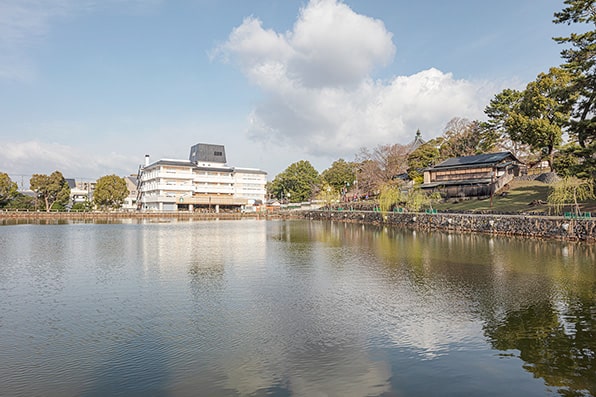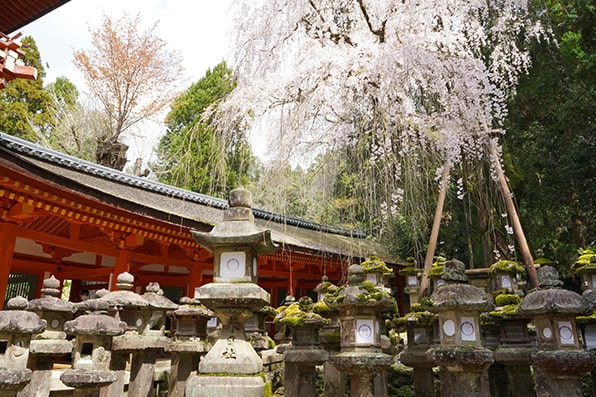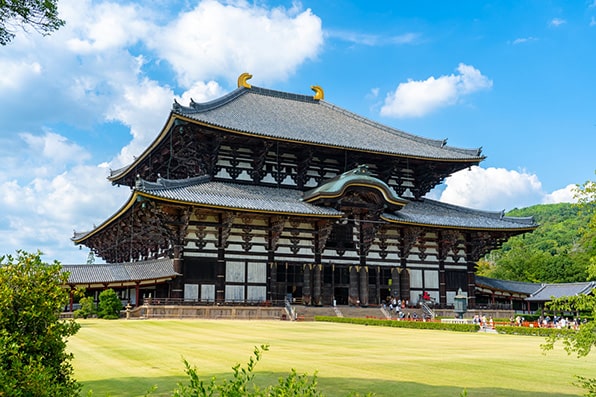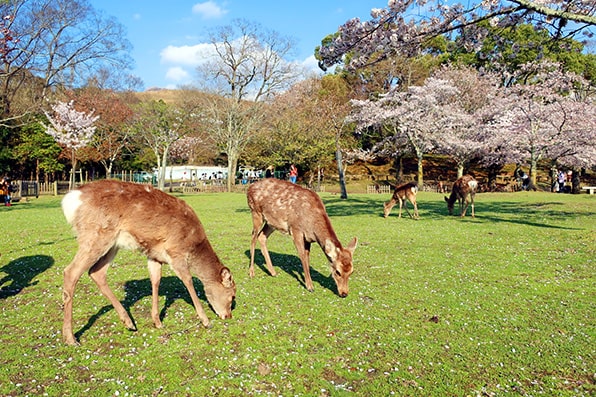Nearby Destinations

Sarusawa PondApprox. 30 second walk from the hotel
The shadow of the Kofuki-ji Five-Story Pagoda extends over the surface of the pond, adding to a scene which changes with the seasons. This sight brings a feeling of peace to the hearts of those who visit the ancient capital.
Nearby the pond stands the Uneme Shrine, dedicated to a maid-in-waiting who once threw herself into the pond.
TEL: 0742-26-1991 (Sarusawa Pond Tourist Information Center)


Kofukuji TempleApprox. 2 min walk from the hotel
Originally built in Yamashina, Yamashiro Province and called Yamashina Temple, after the Asuka period it was moved to its current location in 710. During the Nara period it was considered one of the four great temples.
- Eastern Golden Hall
- Built by Emperor Shomu to pray for Empress Gensho's recovery from illness in 726.
- Northern Round Hall
- A 1208 reconstruction of Kofukuji's oldest building. A sculpture of Buddha Miroku (Maitreya) created by Unkei is enshrined here and only available for special viewings in the spring and fall.
- Sothern Round Hall
- The 9th stop on the Saigoku 33 temple pilgrimage. This building is an Important Cultural Property reconstructed in the Edo period.
*Open only on October 17 each year. - Three-Story Pagoda
- An early Kamakura period Wayo-style construction only open on July 7 each year.
- National Treasure Hall
- Carvings of Asura, Buddha heads, the Yakushi Nyorai from Tokondo and most treasures from Kofukuji are on display here.
TEL: 0742-22-7755

Kasuga Taisha ShrineApprox. 25 min walk from the hotel
The Fujiwara Clan is said to have started the practice of hanging lanterns as a means of prayer for their patron god, and today nearly 1,000 lanterns hang here.
The site is also renowned for its early-summer wisteria, and the Sunazuri-no-Fuji Hanging Wisteria flower spikes grow up to one meter long.
The shrine is painted in elegant vermilion, and the treasure hall houses weapons and furnishings offered by the Fujiwara Clan.
TEL: 0742-22-7788

Todaiji Temple Great Buddha HallApprox. 20 min walk from the hotel
Constructed over 40 years by edict of Emperor Shomu in 741. Known for the Great Buddha of Nara, it is one of the world's largest wooden buildings.
- Great Buddha Hall (Kondo)
- The main hall is a wooden construction which stands 47.34 meters high, and runs 57 meters east to west and 50.5 meters north to south. The main idol enshrined at the temple is the famous 15-meter-tall Great Buddha of Nara.
- Kaidan-in
- Based on the altar set up by the monk Jian Zhen. Statues of the Four Heavenly Kings from the Tenpyo period are enshrined here.
- Hokkedo (Sangatsudo)
- The oldest construction at Todaiji. The name Sangatsudo comes from the fact that Buddhist services are held here on the third month of the lunar calendar. Masterpiece works of Tempyo-style sculptures stand on display inside.
- Nigatsudo
- Known for the Shuni-e ceremony (Omizutori) held each year from March 1 - 14.
- Kaizando Norikoboshi (one of Nara's three famous camellias)
- These camellias have spotted white patterns on their red petals, as if glue was splashed on them.
TEL: 0742-22-5511

Nara ParkApprox. 5 min walk from the hotel
Located on the eastern side of Nara City, this park is a beautiful area of natural scenery nearby Todaiji, Kofukuji, and Kasuga Taisha. The park is surrounded by numerous national treasures and Cultural Heritage sites.
The majority of the park is covered in grass and is home to nearly 1,200 deer.
These deer act as sorts of mascots for Nara Park, and are quite popular with visitors.
The deer will surely be pleased if you feed them the shika-senbei crackers available in the park for ¥200.
TEL: 0742-22-0375 (Nara Park Management Office)

 MAP
MAP